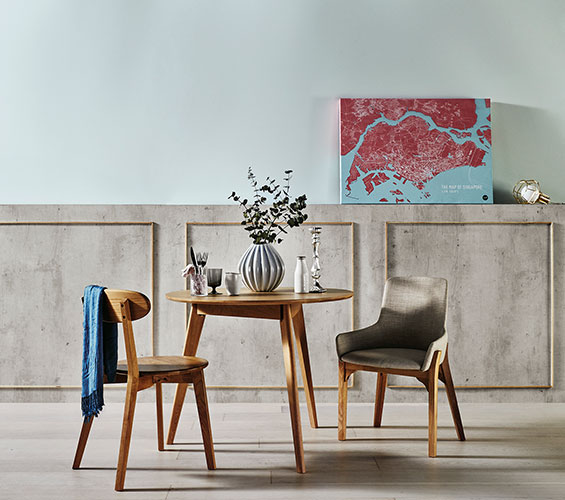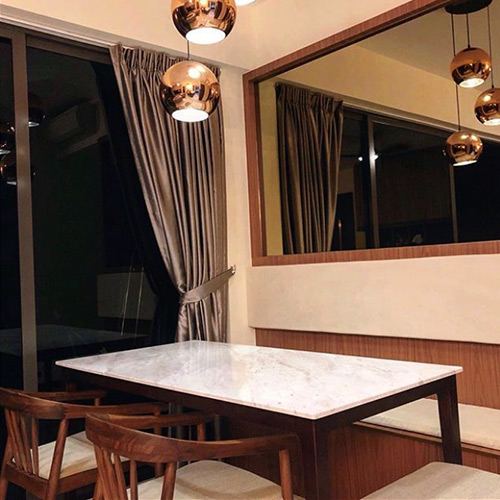Create Your Dream Outdoor Living Space with Perfect Seating Arrangements
The outdoor spaces of our homes have evolved from simple patios with a few chairs to sophisticated extensions of our indoor living areas. A thoughtfully designed outdoor seating arrangement can transform an ordinary backyard into a sanctuary for relaxation, entertainment, and connection with nature. Whether you have a sprawling garden, a modest deck, or a compact balcony, the right furniture arrangement can maximize both the functionality and aesthetic appeal of your outdoor space. This guide will walk you through the essential elements of creating an outdoor seating area that invites you to sit back, relax, and repeat the experience day after day.
Defining Your Outdoor Space
Before selecting furniture, take time to assess how you'll use your outdoor space. Are you dreaming of hosting dinner parties under the stars? Do you envision lazy Sunday afternoons with a book and a beverage? Perhaps your ideal scenario involves a bit of both. Understanding your needs will guide your furniture choices and arrangement.
Start by measuring your available space. Allow for comfortable movement with pathways of at least 90 cm between furniture pieces. Consider the natural flow of traffic and how people will move through the space. For dining areas, ensure there's enough room to pull chairs out and move around the table comfortably. For conversation areas, arrange seating to face each other, creating an atmosphere conducive to interaction.
Remember to account for existing features like trees, garden beds, or built-in structures. These elements can either enhance your seating arrangement or present challenges that require creative solutions.
Choosing the Right Furniture Style
Your outdoor furniture should reflect your personal style while complementing your home's architecture. Popular styles include:
- Bohemian: Characterized by organic elements, layered textures, and a carefree vibe. Think colorful cushions, macramé details, and mixed patterns.
- Mid-century Modern: Features clean lines, minimal embellishments, and a focus on function. Look for tapered legs, smooth surfaces, and organic forms.
- Farmhouse: Embraces natural textures, simple silhouettes, and a rustic charm. Wooden tables with metal accents and simple, comfortable seating define this style.
- Classic/French: Showcases ornate details, curved lines, and rich colors. Wrought iron pieces with scrollwork and plush cushions epitomize this elegant approach.
- Contemporary: Emphasizes sleek profiles, innovative materials, and bold designs. Modular pieces, geometric shapes, and mixed materials are hallmarks of this style.
Whatever style you choose, ensure it creates a harmonious transition between your indoor and outdoor spaces. This visual continuity will make your outdoor seating area feel like a natural extension of your home.
Selecting Durable Materials
Outdoor furniture must withstand the elements, making material selection crucial for longevity and appearance. Consider your local climate when choosing:
Wood: Teak remains the gold standard for outdoor furniture due to its natural oils that resist rot and insects. Less expensive alternatives include eucalyptus and acacia, which offer good durability with proper maintenance.
Metals: Aluminum is lightweight, rust-resistant, and requires minimal maintenance. Wrought iron provides classic appeal and stability but needs protection from rust. Stainless steel offers modern aesthetics with excellent durability.
Synthetic Materials: Resin wicker (polyethylene) mimics the look of natural wicker but withstands sun and rain. Polypropylene and polywood offer affordable, low-maintenance options that resist fading and cracking.
For upholstery, look for fabrics specifically designed for outdoor use, such as solution-dyed acrylics that resist fading, mildew, and water damage. Quick-drying foam inserts prevent cushions from becoming waterlogged after rain.
Creating Comfortable Seating Arrangements
The arrangement of your outdoor furniture should encourage both relaxation and conversation. Consider these popular configurations:
U-shaped Arrangements: Perfect for conversation, this setup surrounds a central coffee table or fire pit, creating an intimate space for gathering.
Sectional Groupings: Modular sectionals can be configured to fit your space perfectly while providing ample seating. Position them to highlight a view or focal point.
Dining Sets: For outdoor meals, choose a table size appropriate for your typical gathering. Round tables foster conversation, while rectangular ones maximize seating in narrow spaces.
Intimate Pairs: Two comfortable chairs with a small table between them create a perfect spot for morning coffee or evening conversations.
Mixed Seating: Combine fixed seating like built-in benches with movable pieces to accommodate different group sizes and activities.
Add comfort with weather-resistant cushions, throw pillows, and outdoor blankets. These soft elements not only enhance comfort but also introduce color and texture to your outdoor space.
Defining Boundaries and Privacy
Creating a sense of enclosure can make outdoor seating areas feel more intimate and room-like. Consider these approaches:
Vertical Elements: Pergolas, trellises, or decorative screens provide structure while supporting climbing plants for added privacy and shade.
Strategic Plantings: Tall grasses, hedges, or container gardens can define the perimeter of your seating area while adding natural beauty.
Level Changes: Raised platforms or sunken seating areas naturally delineate spaces and add architectural interest.
Overhead Features: Shade sails, retractable awnings, or canopies provide protection from sun and light rain while creating a ceiling-like boundary.
These defining elements not only enhance privacy but also create a sense of destination that makes your outdoor seating area feel special and separate from the rest of the yard.
Maximizing Small Spaces
Limited square footage doesn't mean limiting your outdoor living potential. Small spaces benefit from these strategies:
Multi-functional Furniture: Choose pieces that serve dual purposes, such as storage benches, nesting tables, or convertible designs.
Foldable and Stackable Options: Select furniture that can be easily stored when not in use to free up space as needed.
Vertical Thinking: Utilize wall space for hanging planters, lighting, or fold-down tables to keep floor space open.
Visual Tricks: Use mirrors to create the illusion of more space, or position furniture at an angle to break up the boxed-in feeling of small areas.
Scale Appropriately: Choose furniture proportionate to your space—oversized pieces can overwhelm small areas, while too-small furniture can look lost in larger spaces.
Remember that a well-designed small space often feels more intimate and cozy than a sprawling area, offering unique advantages for creating memorable outdoor experiences.
Adding Finishing Touches
The details make the difference between a basic seating arrangement and a truly inviting outdoor retreat:
Outdoor Rugs: Define seating areas and add comfort underfoot with weather-resistant rugs that introduce pattern and color.
Lighting: Layer lighting with string lights overhead, lanterns on tables, and pathway lights for ambiance and functionality after sunset.
Greenery: Incorporate plants at varying heights—from tall potted trees to tabletop succulents—to add life and soften hard edges.
Accessories: Weather-resistant art, outdoor-safe throw pillows, and decorative objects personalize your space and reflect your style.
Focal Points: Center your arrangement around a fire pit, water feature, or spectacular view to create a natural gathering point.
These finishing touches transform a functional seating area into an outdoor room that draws people in and encourages them to linger.
Maintenance and Care
Protect your investment with proper maintenance tailored to your furniture materials:
- Clean surfaces regularly with appropriate cleaners for each material
- Apply protective treatments as recommended by manufacturers
- Store cushions in weather-resistant containers when not in use
- Consider furniture covers for extended periods of non-use
- Inspect regularly for loose hardware or early signs of damage
- Bring particularly vulnerable pieces indoors during severe weather or winter months
Establishing a seasonal maintenance routine will extend the life of your outdoor furniture and keep it looking its best year after year.
Your Outdoor Sanctuary Awaits
Creating the perfect outdoor seating arrangement is both an art and a science—balancing aesthetic preferences with practical considerations. The reward is a personalized outdoor sanctuary that enhances your lifestyle and provides a backdrop for countless memories. Whether you're hosting festive gatherings or enjoying solitary moments of peace, a well-designed outdoor space offers a unique connection to nature while providing all the comforts of home.
Remember that your outdoor seating arrangement can evolve over time as your needs change and as you discover how you naturally use the space. Start with the essentials, observe how the space functions, and add or adjust elements accordingly. With thoughtful planning and personal touches, your outdoor living area will become a favorite destination—a place where you can truly sit back, relax, and repeat the experience of outdoor enjoyment season after season.



